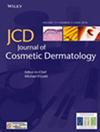A simple and minimally invasive combined procedure, including transconjunctival orbital fat removal and transcutaneous resected orbital fat injection, was performed based on the anatomical characteristics of the lower eyelids in our young Chinese patients. Our study aimed to investigate the efficacy and safety of this procedure in our study population.
In our retrospective study, a total of 183 consecutive patients underwent a combination of traditional transconjunctival blepharoplasty and nanofat grafting between February 2020 and June 2024. After transconjunctival septal fat removal, the resected orbital fat was processed into fat emulsion (nanofat) and then injected percutaneously into the depressed tear trough zone.
The mean age of the 183 patients was 26.9 years old, and the average surgery time was 36.1 min. The mean volume of nanofat injected for bilateral lower eyelids in each patient was 1.1 mL. All the patients were followed for at least 6 months after surgery, and the subjective patient satisfaction was 96.6% (175/183) with fewer complications. In the objective assessment of the surgical outcomes according to the five anatomical elements of lower eyelids, orbital fat prolapse, tear trough depression and dark circles were all improved, orbicularis prominence was more evident, while skin elasticity did not vary significantly after operation.
Our study provided a simple, effective, and safe combination of transconjunctival lower blepharoplasty and percutaneous nanofat grafting for the treatment of lower eyelid bags with high patient satisfaction, quick recovery and low complication rate. Thus, this combined application may be a promising alternative choice for the young Chinese with lower eyelid bags.


